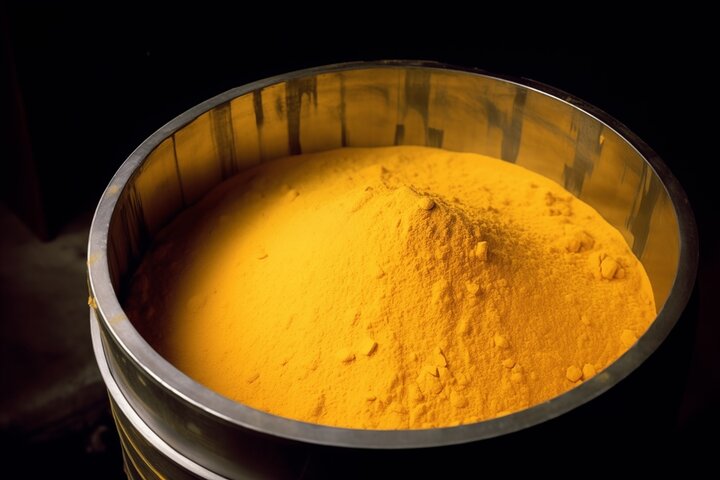After 30 years investing professionally one thing I know and of which I’m constantly reminded, is that we are always learning. And indeed, there were important lessons to be learned from 2018.
Cast your mind back 12 months: we entered the year with a strong, synchronous global economy. We had concerns about rising US rates, as most did, but we were also acutely aware of China’s financial reforms.
A booming economy gave Chinese authorities a mandate to continue their reform program, focusing on cleaning-up the shadow banking system. The unintended consequence was credit tightening.
Again, we were aware of this, however, we believed China’s economy was robust enough to cope. We were more optimistic than most on Europe and Japan. And while Trump’s second year agenda centred on trade, we thought US corporates’ entrenched interests would modify this.
2018 was very different to this picture. Tighter credit caused China to slow; this was exaggerated by trade tensions via lost confidence and amplified in the domestic stock market which peaked in January then consistently fell.
But, the second order impact hurt more. Aftershocks rippled around the world, slowing European and Japanese recoveries and hurting emerging markets. Meanwhile, the US powered on, assisted by fortuitously timed fiscal stimulus.
Our portfolios felt these impacts, though our Chinese stocks suffered less than you may expect. As disappointing was the effect on our Japanese and cyclical holdings.
Our attempts to protect the portfolios contain a paradox. In corrections such as 1998, 2011 and 2015, and in the early stages of bear markets, we have fallen with the market. People cling to winners, usually dumping out-of-favour stocks first. While China peaked in January, the hotter Nasdaq only sold off from October.
Broad indices do not tell the full story. Participation has narrowed. The MSCI’s World Index positive return was generated from 30 stocks out of over 2500. Through November, with the index up 4%, the average stock was down 3%.
However, this has been a year of lessons and while they may seem obvious, they are important and worth emphasising.
Firstly, a maturing China economy is more responsive to domestic rates and credit conditions. This has happened twice in four years. Absent floating exchange rates, it remains more susceptible to mini booms and busts.
Secondly, China is the world’s largest physical market – not just for iron ore and copper but everything imaginable: aeroplanes, autos, mobile phones, semiconductors, running shoes and luxury handbags.
But the focus of most investors, commentators and index providers, for my 30 years in markets, has been on that centre of the investing universe, the US. It’s been true that when the US sneezes, the world catches a cold. But in 2018, the US was in great shape, yet the world slowed. Because of China!
So how should we apply these lessons to 2019?
China has moved its fiscal and monetary settings to stimulative. This is key – authorities recognised the slowdown.
The Central Bank twice cut reserve requirements and encouraged lending to private enterprises; the Shanghai Interbank rate dropped from 4.5% to 2.5%; infrastructure spending growth, negative as recently as August has turned positive; tax cuts slated for next year are worth 1% to GDP; and property policies are being gradually loosened.
There are some early signs of improvement. We see it in data on excavator sales and construction machinery. In November PMI surveys improved. With a cleaner, more resilient, banking system we expect to see a stabilising of the economy around 6% growth.
Longer term drivers in China and Asia remain - investment in education, climbing the technology ladder and entrepreneurial spirit.
As regards trade, the current negotiations are reason for some optimism. Western media ignored Chinese concessions which made the ceasefire unsurprising. Since July, companies such as BASF, Exxon and Tesla have committed to significant new investments in China and have not been required to have local partners. Insurers Allianz and AXA have also announced they will establish 100% owned Chinese subsidiaries. BMW and Daimler are buying out local partners.
Finally, in the US the pace of interest rate hikes looks set to slow down. Inflationary pressures remain subdued, unit labour costs are not rising and pre-tax profits are growing strongly. There has been a softening in the housing market and in auto sales in response to higher interest rates, however, consumer and business confidence remains high in spite of all that has been going on in the world. While one can never know, and in today’s global political environment events can arise quickly that changes the outlook, this doesn’t appear to be an economy that is about to slip into recession.
Meanwhile, valuations in China have plunged. We can buy-back into local champion companies like premium white spirits company, Kweichow Moutai, leading sports apparel group, Anta Sports or a ZTO Express, the largest e-commerce parcel delivery company. ZTO will deliver eight billion parcels in 2018 with clear cost advantages leading to faster, more profitable growth than a market expanding at 25%. They will carry a lot more parcels in three years’ time regardless of the economy. ZTO is on 15x.
Our largest China holding, insurer Ping An, has grown at similar rates to Amazon over the last decade. It is the leading fin-tech in China and trades around 11x, with a great runway ahead.
China is a resilient country and things change quickly. Air quality has vastly improved in the last two years as “bringing back the blue skies” has been a priority.
Europe is resilient too, despite Brexit or Italy. Post-GFC, Europe repaid debt and restored competitiveness. While painful and slowing their recovery today it has a stable foundation while Australia and the US are imbalanced and vulnerable. This is relevant with rates rising and growth slowing.
Nik Dvornak, European Fund Manager, came back from Eastern Europe recently full of ideas. It’s an area that is a microcosm of the trends in markets this year. Stocks exposed to emerging markets, China slowdown or populism have struggled. Eastern Europe has the trifecta: small, open, emerging market economies with home grown populists.
Investors, remembering the GFC’s impact there have fled. But local consumers are confident with job security, rising wages and latent spending power. The inverse of tapped out, indebted Australians, Americans or Brits. Raiffesen Bank, low cost carrier Wizz Air and supermarket Dino Polska are in the European Fund.
But it’s more than macro, it’s about stocks. The primary filter is going to the unloved, the out-of-favour, even the feared.
With China slowing, trade concerns and rising US rates, Asia and cyclicals are at the top of this list.
After sharp falls in multiple markets many ask if this is the warning of global recession. But after a 40% fall one could argue, a company’s ‘recessionary moment’ is now. A crude starting point…. but we own and are buying semiconductor companies, down 30-40% across the board and on or near single digit PE’s across the chain. This includes SUMCO, Samsung, Skyworks and Microchip.
Oft-derided as commodities, the market fears a cycle, but we see three big positives.
Firstly, consolidation is leading to much better supply discipline.
Secondly, despite the hype around technology, Moore’s Law is slowing down. We are at physical shrinkage limits; costs and challenges around improvements further limits supply.
Finally, all the hot themes people want and pay handsomely for such as autonomous driving, artificial intelligence and the internet of things, rely on these unloved, dominant global businesses to power their growth.
So it feels uncomfortable today, but amazing opportunities are out there. The Platinum International Fund’s average portfolio stock is currently on 11X, a 9% earnings yield. This is the best in a decade. Ultimately price is the biggest driver of returns.
Since October 2018 we have added about 7% exposure to the Platinum International Fund - putting a billion dollars to work. We keep high cash levels for optionality as risks remain. However, extreme dispersion has been experienced prior to previous periods of strong performance.
I was recently asked what keeps me awake at night, and it wasn’t US rates. Nor was it the fact that US corporate debt is higher than it was pre-GFC.
It is the idea that where huge amounts of capital go problems tend to follow. In listed markets this might be software, the internet, or biotech, all now under pressure.
For ages, we warned of risks in Australian banks and residential property. We warned passive can be dangerous.
Today, the answer is unclear but it could be private equity or unlisted infrastructure. However, it is hard to see how these assets trigger a crisis and I would expect these assets disappoint their debt and equity investors one entity at a time.
Clearly, our performance this year is well below expectations. That our portfolio has performed poorly in the early stages of a sell-off is not entirely unexpected and not inconsistent with our history. At times of uncertainty investors generally do not embrace the unloved and out-of-favour parts of the markets. However, our experience has been that buying stocks at the valuations across our current portfolio should lead to good investment returns over time.
DISCLAIMER: This information has been prepared by Platinum Investment Management Limited ABN 25 063 565 006 AFSL 221935, trading as Platinum Asset Management ("Platinum"). It is general information only and has not been prepared taking into account any particular investor’s investment objectives, financial situation or needs, and should not be used as the basis for making an investment decision. You should obtain professional advice prior to making any investment decision. The market commentary reflects Platinum’s views and beliefs at the time of preparation, which are subject to change without notice. No representations or warranties are made by Platinum as to their accuracy or reliability. To the extent permitted by law, no liability is accepted by Platinum or any other company in the Platinum Group®, including any of their directors, officers or employees, for any loss or damage arising as a result of any reliance on this information.


